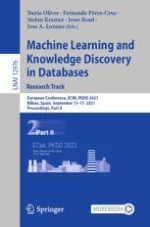2021 | OriginalPaper | Chapter
GraphSVX: Shapley Value Explanations for Graph Neural Networks
Authors : Alexandre Duval, Fragkiskos D. Malliaros
Published in: Machine Learning and Knowledge Discovery in Databases. Research Track
Publisher: Springer International Publishing
Activate our intelligent search to find suitable subject content or patents.
Select sections of text to find matching patents with Artificial Intelligence. powered by
Select sections of text to find additional relevant content using AI-assisted search. powered by
